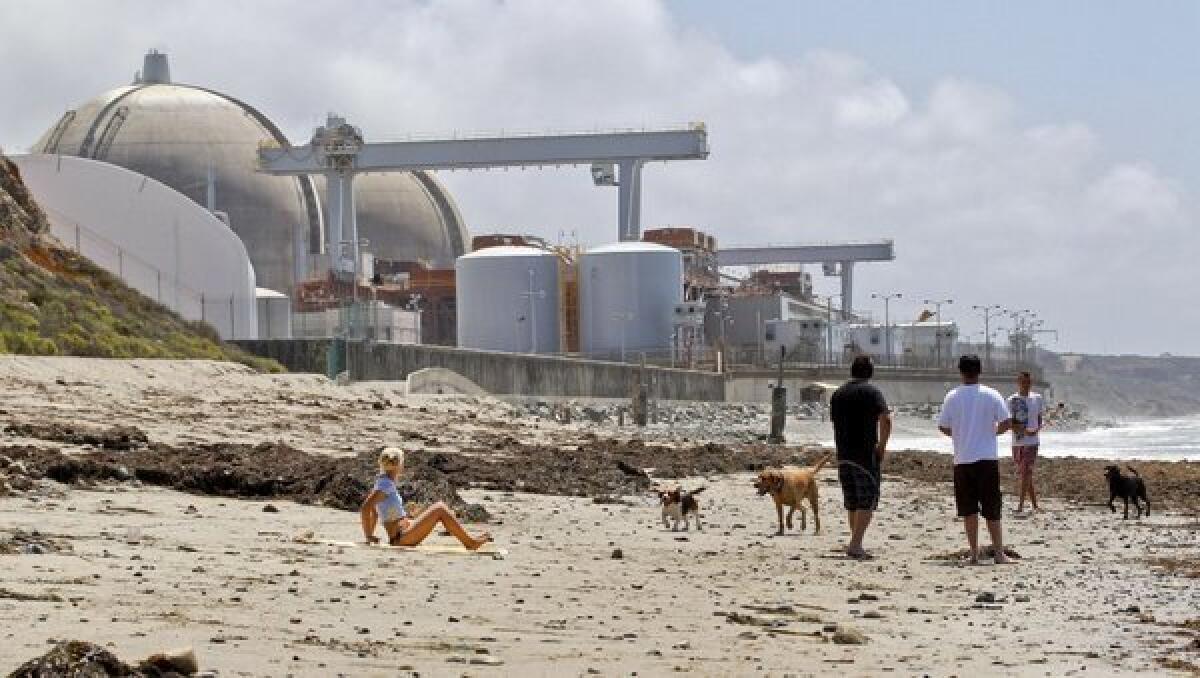Ratepayers can’t afford a grid without San Onofre [Blowback]

- Share via
Though public debate over the future of the San Onofre Nuclear Generating Station is proper and healthy, it is important that customers understand exactly how their rates are calculated and how utilities’ costs are recovered from long-term investments in critical electricity grid infrastructure.
On its face, Times columnist Michael Hiltzik’s argument that utility customers should not have to pay for a power plant that, like San Onofre, is not currently producing electricity seems perfectly logical. But this view incorrectly assumes that Southern California Edison and San Diego Gas & Electric, the two principal owners of San Onofre, operate like retail businesses -- as if electrons generated from various sources are sold as individual commodities, like shirts at various retail outlets. But electricity cannot be stored like a shirt on a store shelf.
In California, the electric utility business is structured very differently than a normal retail or service business. And there is good reason for that: Electricity, like water, is an essential commodity. Lighting makes our streets safer at night, and air conditioning makes triple-digit summer heat waves survivable. Given that, it’s crucial for society to have reliable, constantly available electricity service. It also must come at a reasonable cost: It is not a luxury item, it is an essential.
Delivering reliable electricity 24/7 requires building and maintaining a massive infrastructure of power plants, transmission lines, substations, transformers and distribution networks, plus the people to operate them. (Edison’s portion of the grid -- its rate base -- is valued at $20 billion.) This requires enormous capital investments by the utilities, capital put up by shareholders and borrowed from credit markets.
These costs are later recovered from customers in their monthly bills. To keep rates affordable, these costs are spread out over many years, decades even, and across several million customer accounts. (Under California’s regulated utility system, Edison does not make a profit on the electricity it delivers to customers; instead, it gets reimbursed for the costs of operating and maintaining the grid, plus a return on the large grid investment allowed by regulators.)
Because all electricity in the grid is the same no matter where it comes from -- solar panels, wind farms or nuclear plants -- what customers are paying for is the constant supply of power from the entire grid, regardless of which components are currently offline.
Until January 2012, San Onofre had been providing clean, reliable and affordable power for nearly 30 years, and the total costs for those decades of service have not yet been completely recovered. Even when San Onofre is offline, there are considerable ongoing costs associated with maintaining it. There are costs for security and safety, storage of spent fuel, and funds accumulating for its eventual decommissioning, among others.
The bottom line is that, with or without San Onofre, utility customers are getting exactly what they are paying for: reliable electric service at fair rates that are set by state regulators to reflect the cost of providing such service.
The debate over funding for San Onofre will continue through the normal regulatory process. The California Public Utilities Commission will decide what’s fair for ratepayers and utilities. But it is important not to lose sight of the larger issue: San Onofre is a vital part of the electric grid that serves Southern California, and it should be returned to service as soon as it can be safely done.
San Onofre’s 2,200 megawatts of peak output are a crucial contributor to California’s ambitious clean-energy goals. Its strategic location between the Los Angeles and San Diego population centers provides crucial voltage support for the entire Southern California grid. Future replacement generation and transmission will be expensive and controversial as well. Cutting off funding for San Onofre right now would be premature and would hinder efforts to bring the plant back online. And that is something that Southern Californians truly cannot afford.
ALSO:
The church is more than the pope
Mailbag: A warm welcome for Pope Francis
Ronald Litzinger is president of Southern California Edison.
If you would like to write a full-length response to a recent Times article, editorial or Op-Ed and would like to participate in Blowback, here are our FAQs and submission policy.
More to Read
A cure for the common opinion
Get thought-provoking perspectives with our weekly newsletter.
You may occasionally receive promotional content from the Los Angeles Times.









